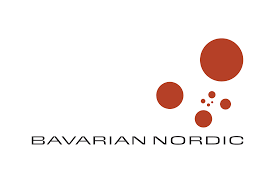There is under a week left until the regional elections on November 16. The criteria eligibility for voting is identical to the municipality elections, so the majority of internationals can vote.
These elections, which take place once every four years, are a chance for Danish citizens and international residents to shape their regions for the better.
The make-up of a regional council, which always consists of 41 members, will have a significant effect on how much money is spent on health – the main priority, accounting for 90 percent of the budget – environmental planning, soil pollution management and some matters pertaining to education.
In 2021 alone, they collectively had 130 billion kroner in tax money at their disposal – received from the state (70 percent) and municipalities (30 percent).
205 members nationwide
Denmark has three political and administrative levels: national, regional and municipal. Prior to 2007, Denmark had 13 counties and 270 municipalities, but this changed with the Danish Municipal Reform, which introduced five regions and 98 municipalities.
Voters elect 41 council members for each region, so 205 council members in total. The elected members of the regional council represent their regions on a four-year term. Citizens can only vote for regional councils in the region in which they reside.
The five regions are the Capital Region (Hovedstaden), Mid Jutland Region (Midtjylland), South Denmark Region (Syddanmark), Zealand Denmark (Sjælland), and North Jutland Region (Nordjylland).
The regional houses are located in Hillerød, Viborg, Vejle, Sorø and Aalborg, respectively.
Although the main priorities and responsibilities of all the regions are connected to health, some of the responsibilities vary depending on the region.
Things to consider when voting
The list of candidates is available six weeks prior to the election at the Citizen Services Center (for advance voting purposes) and at the polling stations on Election Day.
The polling stations are available near the voter’s home address, which can be found via this link: kbhkort.kk.dk/spatialmap.
Any voter may vote in advance at citizen service centres (up until Friday 12 November). Voting in advance is also possible in any Danish diplomatic representation abroad (embassies and consulates).
In addition, advanced voting is also possible in hospitals for hospitalised voters, at care homes and sheltered housing, and in prisons for detainees. For voters who are unable to turn up at the polling station on election day due to their illness or disability, voting can also take place at home upon application.
If you have voted in advance, you cannot vote on election day.
After the election
Once the names of the 41 members of each regional council have been confirmed, the parties can begin to negotiate who will have the key positions for the coming election period. The four-year term begins on January 1.
The most senior position is the chair of the regional council, but in addition, various committee items are also negotiated.
Once the negotiations are concluded, the appointments are formally constituted at a constituent regional council meeting.
Also at the constituent meeting, the regional council decides on the make-up of the political committees.
Regions: An overview
Capital Region
The Capital Region of Denmark has 29 municipalities in its jurisdiction, including Copenhagen, Frederiksberg and, perhaps surprisingly, Bornholm. It has over 1.8 million inhabitants and is responsible for 40 percent of the Danish Gross Domestic product. Its biggest city is Copenhagen.
The responsibility area of the region includes the capital’s health system, growth and employment in innovative companies, and quality of life in the form of a green environment.
Mid Jutland Region
Central Denmark Region covers 19 municipalities with 1.3 million inhabitants – approximately one-fourth of the Danish population. It had a gross budget of 28.9 billion kroner in 2019. Its biggest city is Aarhus.
The responsibility area of the region is health, psychiatry, and social and regional development.
South Denmark Region
The Region of Southern Denmark covers 22 municipalities with a population of 1.2 million people. The annual budget is approximately 25.6 billion kroner. The largest local municipality is Odense, which has almost 200,000 inhabitants.
The region’s assignments are within health, social services and special education, psychiatry, and regional development.
Zealand Region
Region Zealand comprises 17 municipalities, including 22 cities, with a combined population of 821,000 inhabitants. The approximate budget is 18.7 billion kroner. The largest city in the region is Roskilde.
The region performs two main tasks: regional development and an operational enterprise in healthcare and social affairs.
North Jutland Region
The North Denmark Region is the smallest with just 600,000 citizens. Its biggest city is Aalborg.
It is responsible for healthcare, regional development, social services and special education.
















